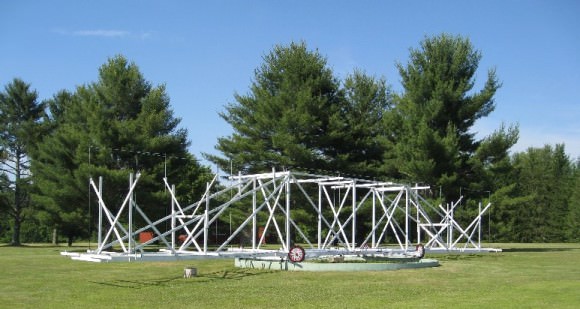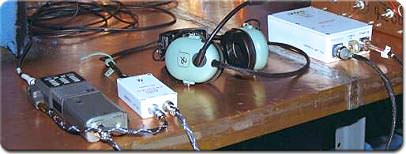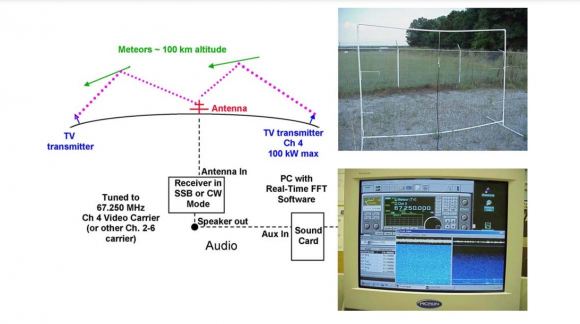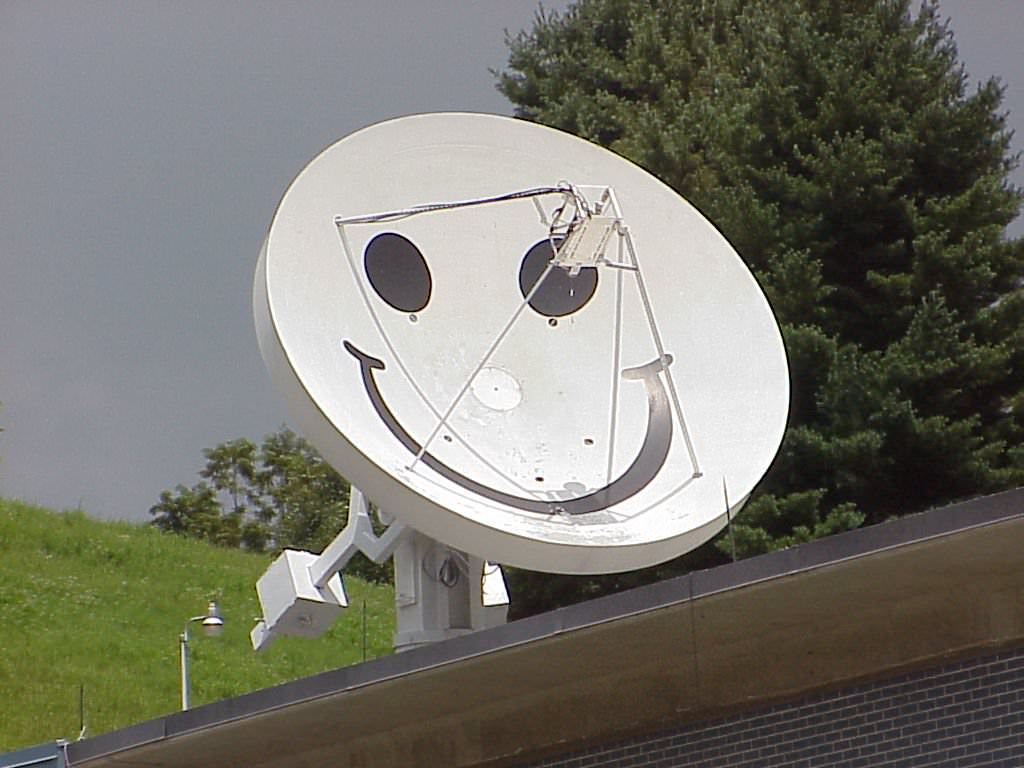Is there truly anything new under the Sun? Well, when it comes to amateur astronomy, many observers are branching out beyond the optical. And while it’s true that you can’t carry out infrared or X-ray astronomy from your backyard — or at least, not until amateurs begin launching their own space telescopes — you can join in the exciting world of amateur radio astronomy.
We’ll admit right out the gate that we’re a relative neophyte when it comes to the realm of radio astronomy. We have done radio observations of meteor showers in tandem with optical observations, and have delved into the trove of information on constructing radio telescopes over the years. Consider this post a primer of sorts, an intro into the world of radio amateur astronomy. If there’s enough interest, we’ll follow up with a multi-part saga, constructing and utilizing our own ad-hoc “redneck array” in our very own backyard with which to alarm the neighbors and probe the radio cosmos.

…And much like our exploits in planetary webcam imaging, we’ve discovered that you may have gear kicking around in the form of an old TV dish – remember satellite TV? – in your very own backyard. A simple radio telescope setup need not consist of anything more sophisticated than a dish (receiver), a signal strength detector (often standard for pointing a dish at a satellite during traditional installation) and a recorder. As you get into radio astronomy, you’ll want to include such essentials as mixers, oscillators, and amplifiers to boost your signal.
Frequency is the name of the game in amateur radio astronomy, and most scopes are geared towards the 18 megahertz to 10,000 megahertz range. A program known as Radio-SkyPipe makes a good graphic interface to turn your laptop into a recorder.
Radio astronomy was born in 1931, when Karl Jansky began researching the source of a faint background radio hiss with his dipole array while working for Bell Telephone. Jansky noticed the signal strength corresponded to the passage of the sidereal day, and correctly deduced that it was coming from the core of our Milky Way Galaxy located in the constellation Sagittarius. Just over a decade later, Australian radio astronomer Ruby Payne-Scott pioneered solar radio astronomy at the end of World War II, making the first ever observations of Type I and III solar bursts as well as conducting the first radio interferometry observations.

What possible targets exist for the radio amateur astronomer? Well, just like those astronomers of yore, you’ll be able to detect the Sun, the Milky Way Galaxy, Geostationary and geosynchronous communication satellites and more. The simple dish system described above can also detect temperature changes on the surface of the Moon as it passes through its phases. Jupiter is also a fairly bright radio target for amateurs as well.
Radio meteors are also within the reach of your FM dial. If you’ve ever had your car radio on during a thunderstorm, you’ve probably heard the crackle across the radio spectrum caused by a nearby stroke of lightning. A directional antenna is preferred, but even a decent portable FM radio will pick up meteors on vacant bands outdoors. These are often heard as ‘pings’ or temporary reflections of distant radio stations off of the trail of ionized gas left in the wake of a meteor. Like with visual observing, radio meteors peak in activity towards local sunrise as the observer is being rotated forward into the Earth’s orbit.
Amateur SETI is also taking off, and no, we’re not talking about your crazy uncle who sits out at the end of runways watching for UFOs. BAMBI is a serious amateur-led project. Robert Gray chronicled his hunt for the elusive Wow! signal in his book by the same name, and continues an ad hoc SETI campaign. With increasingly more complex rigs and lots of time on their hands, it’s not out of the question that an amateur SETI detection could be achieved.
Another exciting possibility in radio astronomy is tracking satellites. HAM radio operators are able to listen in on the ISS on FM frequencies (click here for a list of uplink and downlink frequencies), and have even communicated with the ISS on occasion. AMSAT-UK maintains a great site that chronicles the world of amateur radio satellite tracking.

Old TV dishes are being procured for professional use as well. One team in South Africa did just that back in 2011, scouring the continent for old defunct telecommunications dished to turn them into a low cost but effective radio array.
Several student projects exist out there as well. One fine example is NASA’s Radio JOVE project, which seeks student amateur radio observations of Jupiter and the Sun. A complete Radio Jove Kit, to include receiver and Radio-SkyPipe and Radio-Jupiter Pro software can be had for just under 300$ USD. You’d have a tough time putting together a high quality radio telescope for less than that! And that’s just in time for prime Jupiter observing as the giant planet approaches quadrature on April 1st (no fooling, we swear) and is favorably placed for evening observing, both radio and optical.
Fearing what the local homeowner’s association will say when you deploy your very own version of Jodrell Bank in your backyard? There are several online radio astronomy projects to engage in as well. SETI@Home is the original crowd sourced search for ET online. The Zooniverse now hosts Radio Galaxy Zoo, hunting for erupting black holes in data provided by the Karl Jansky Very Large Array and the Australia Telescope Compact Array. PULSE@Parkes is another exciting student opportunity that lets users control an actual professional telescope. Or you can just listen for meteor pings online via NASA’s forward scatter meteor radar based out of the Marshall Space Flight Center in Huntsville, Alabama. Adrian West also hosts live radio meteor tracking on his outstanding Meteorwatch website during times of peak activity.

Interested? Other possibilities exist for the advanced user, including monitoring radio aurorae, interferometry, catching the hiss of the cosmic microwave background and even receiving signals from more distant spacecraft, such as China’s Yutu rover on the Moon.
Think of this post as a primer to the exciting world of amateur radio astronomy. If there’s enough interest, we’ll do a follow up “how-to” article as we assemble and operate a functional amateur radio telescope. Or perhaps you’re an accomplished amateur radio astronomer, with some tips and tricks to share. There’s more to the universe than meets the eye!
-Also be sure to check out SARA, the Society of Amateur Radio Astronomers.

